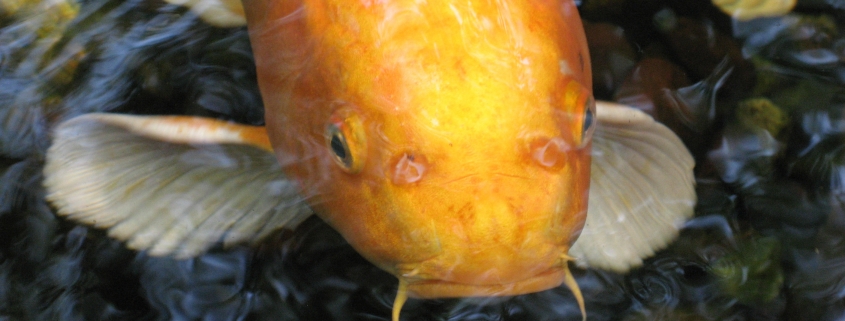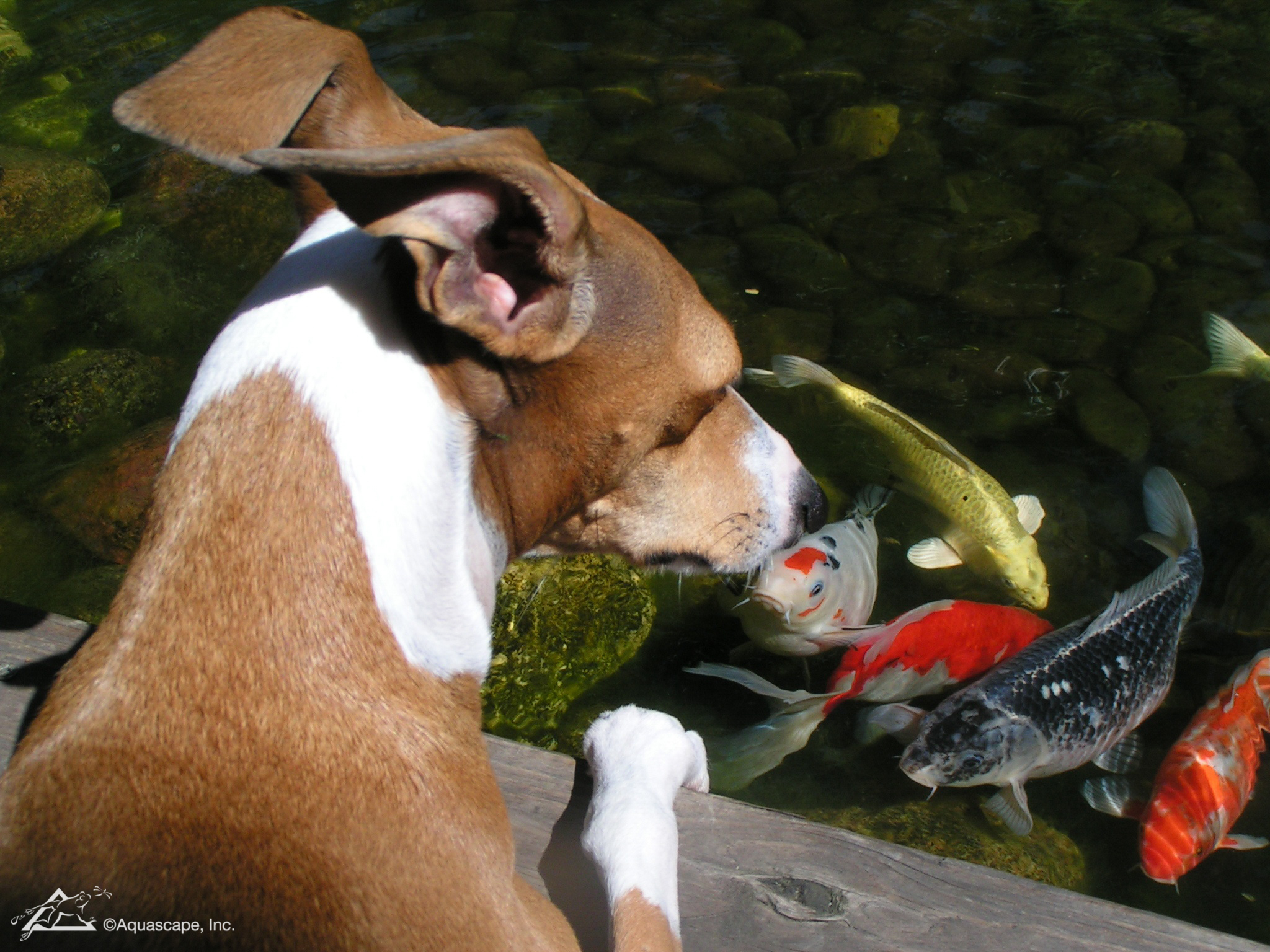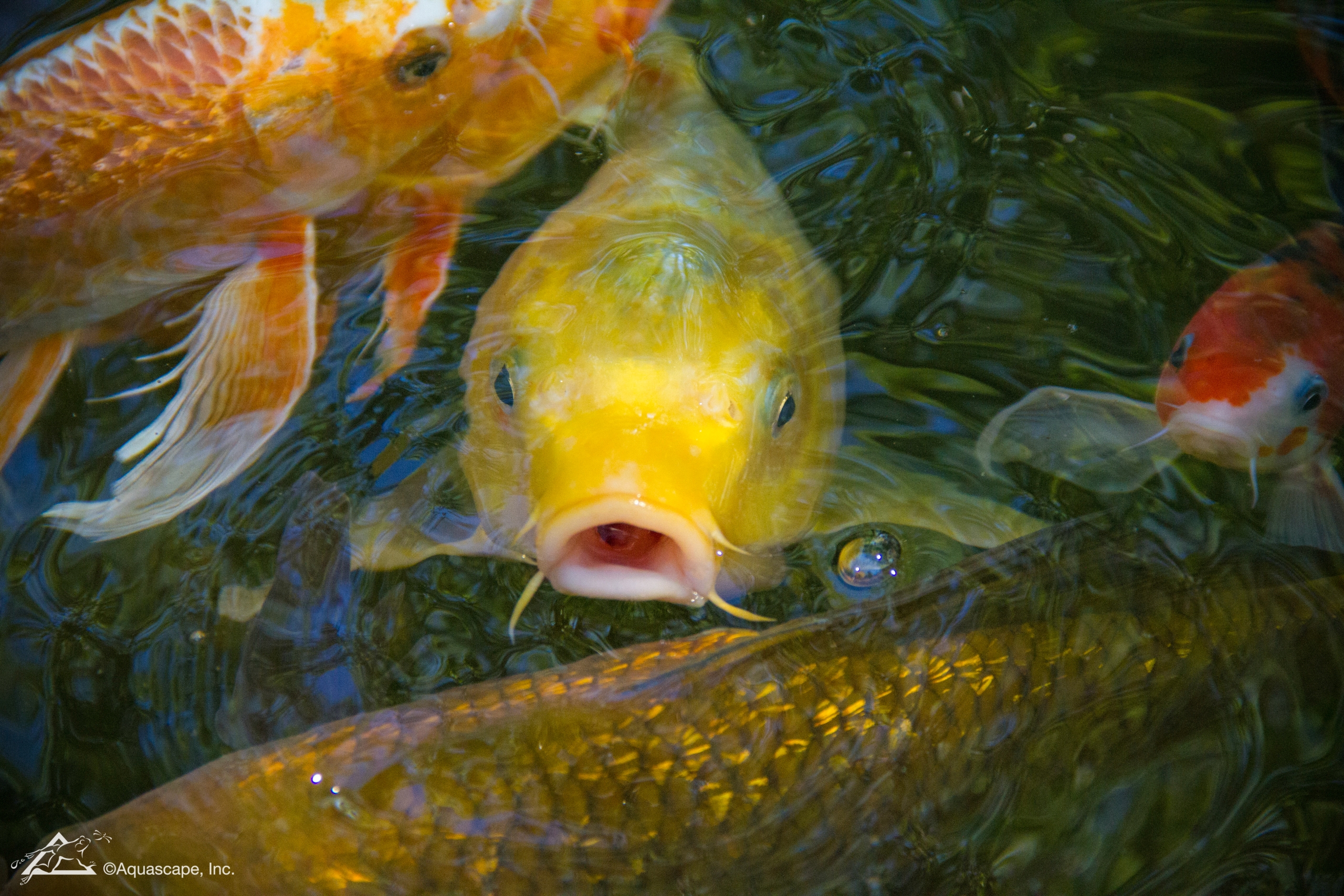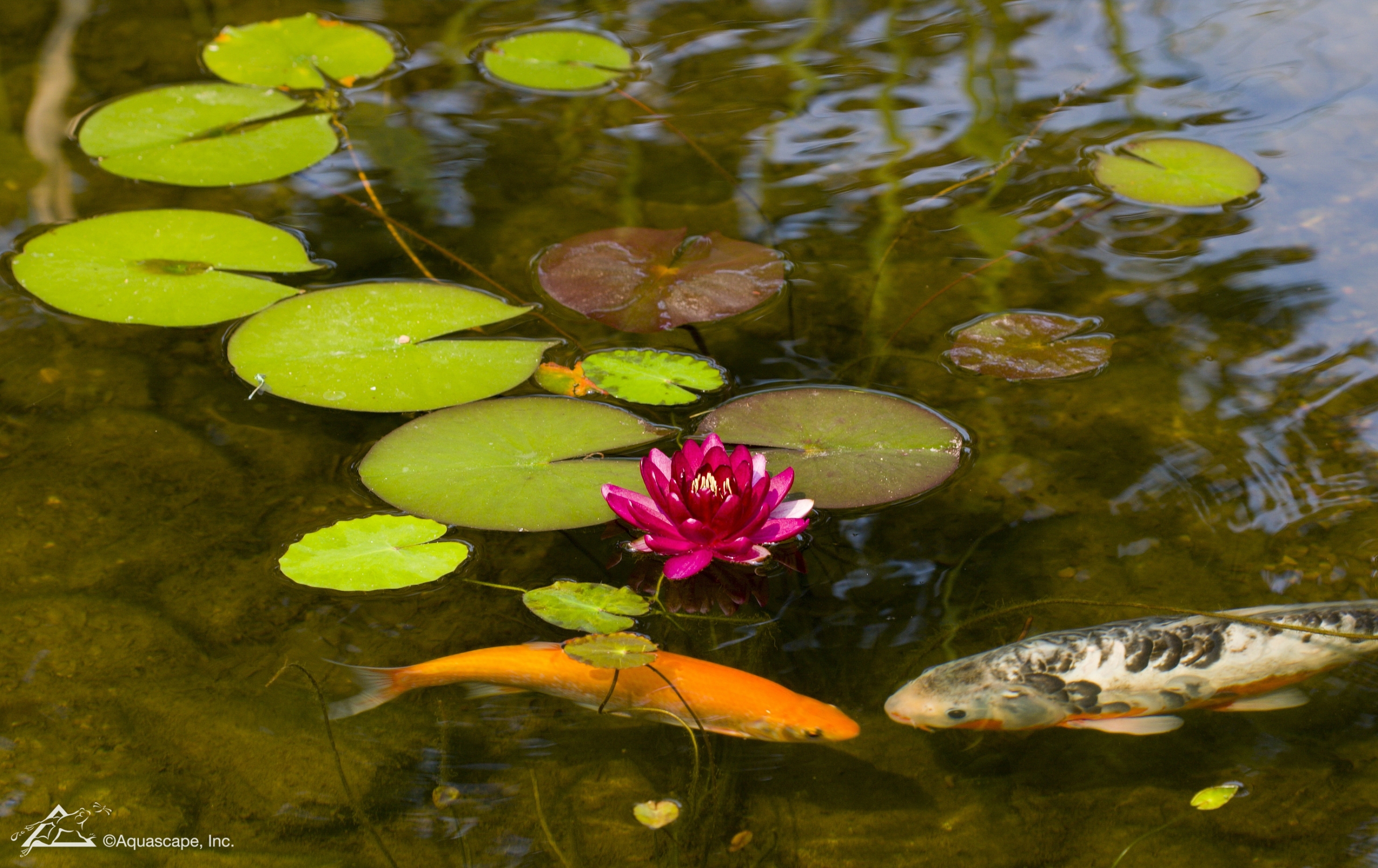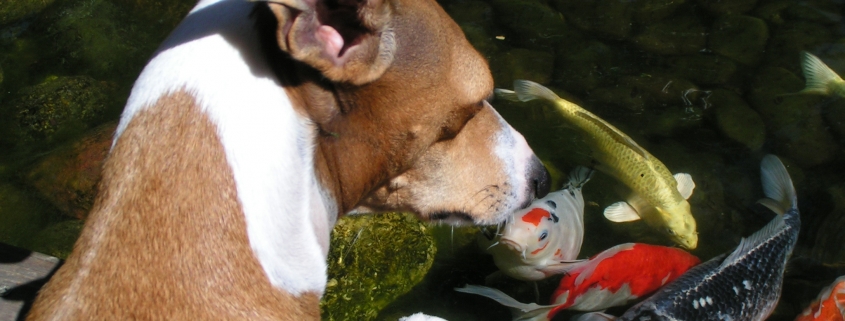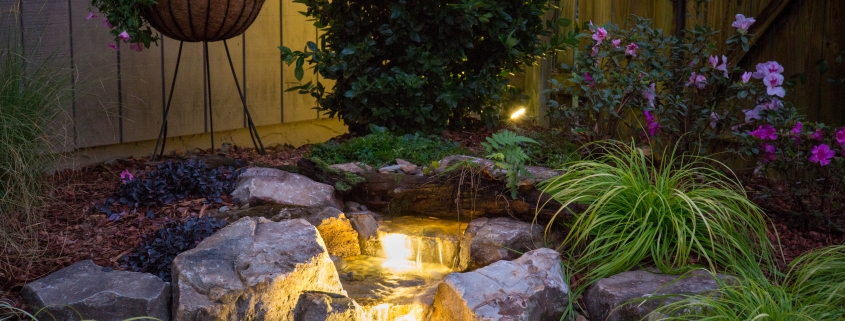How To Choose The Correct Pond Pump
Choosing a pump for your pond or fountain is a crucial step to ensure you maintain proper water movement. Failure to keep the water adequately circulated can result in stagnation, algae buildup, and mosquitoes. In addition, if you have fish, plants, or other aquatic life in your pond, you must keep the water healthy by evenly distributing the oxygen levels and other nutrients.

Types of Pond Water Pumps
There are two main types of pond water pumps: submersible and external (out-of-pond), also known as centrifugal pumps. Depending on the application, each pump offers specific advantages.
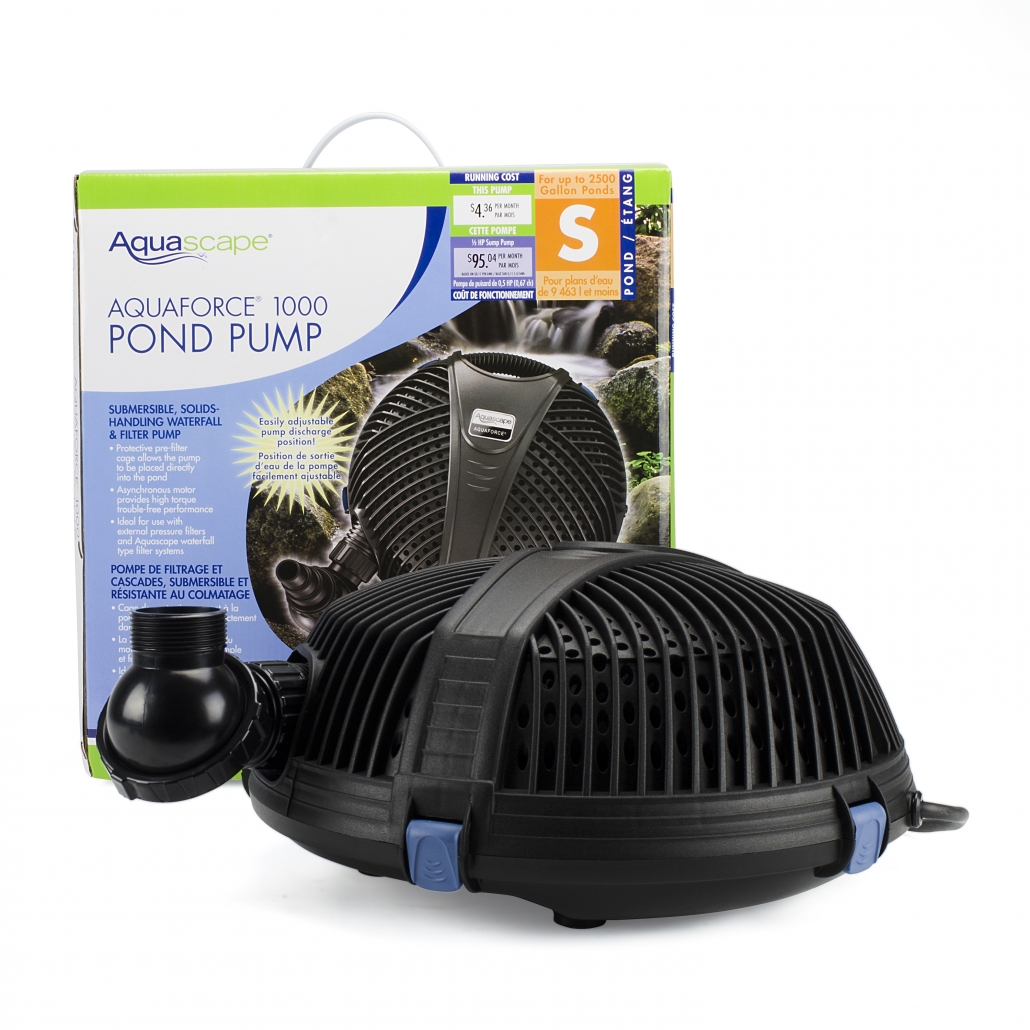
Submersible Pond Pumps
Submersible pumps are designed to be fully submerged underwater at the deepest part of the pond. They are placed directly into your pond or in a skimmer box or pond vault. Submersible pumps range in size from 50 to 5,000 gallons per hour. They are easy to install and are sometimes a more economical solution for smaller ponds (up to 1000 gallons of water). They are also quiet and can also be used to drain your pond. If you have fish or other aquatic life in your pond, you may want to consider a model that does not use oil because there is a danger of the pump seal breaking and oil coolant leaking into the water.
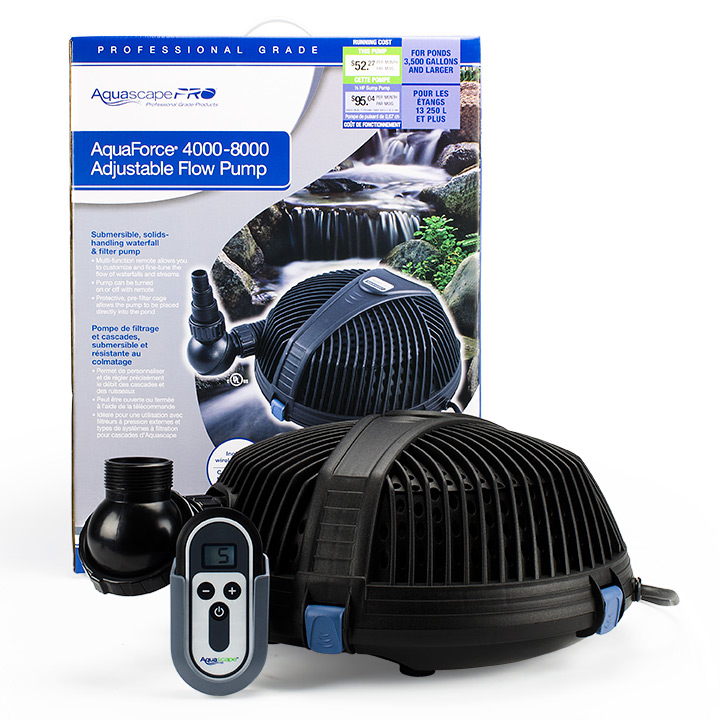
Centrifugal Pond Pumps
External or centrifugal pond pumps are a reliable, energy-efficient option. They are installed in a dry location near your pond. External pond water pumps are suitable for larger ponds (over 1000 gallons). Compared to a submersible pump, they are typically louder and more complicated to install; however, they are easier to maintain.
When selecting a pond pump, it’s essential to keep in mind that pumps have different cord lengths. Ensure the cord is long enough to go through the pond and plugin far away from the water. Some electrical codes specify that the outlet for water features must be at least 6 feet away from the water. Therefore, it is recommended that you avoid using an extension cord. However, if you must use one, make sure it’s suitable for outdoor use and plugged into a ground fault circuit interrupter (GFCI) so that it will immediately shut off if there is an overload.
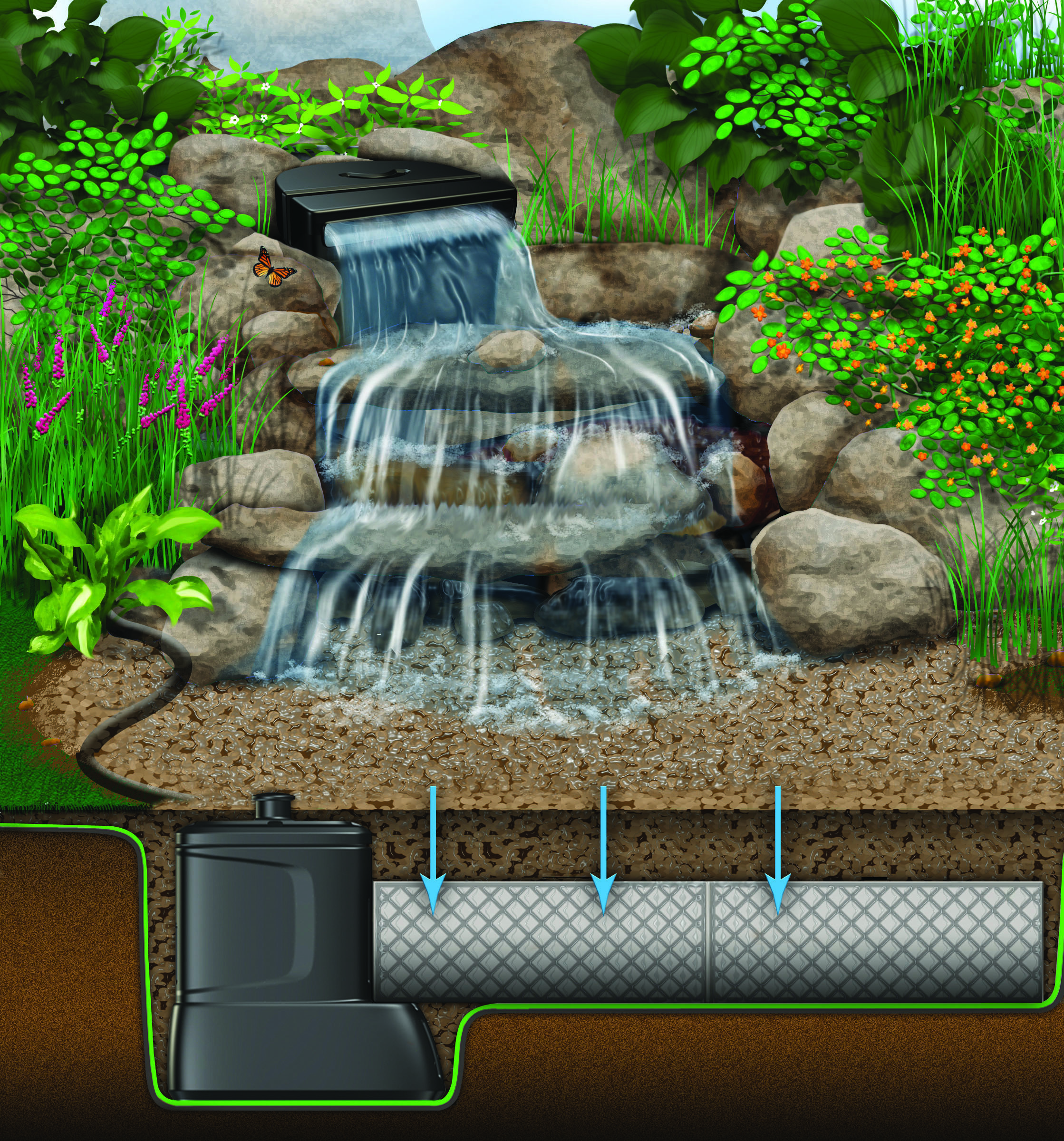
How to Size a Fountain or Pond Pump
Pond pumps are sized by gallons per hour (GPH) at one foot of lift or height. Larger capacity pumps are rated by horsepower (HP). To determine the size pond pump, first, you need to calculate the volume of water in the pond. To calculate the volume of water in gallons, multiply the length x width x average depth x 7.5.

Water Circulation Factors
It is recommended that pond water is circulated at least once per hour. For example, if you have a 500-gallon pond, you need a pump that runs 500 gallons per hour at the discharge height. If your pond has a pressurized filter, you ideally want to turn the water approximately once every two hours. For example, if you have a 1000 gallon pond, you need a pond pump rated at a minimum of 500 GPH. If your pond has a skimmer or waterfall, the water should be turned approximately once every hour. Therefore, if you have an 1800 gallon pond, you will need an 1800 GPH rated pump.

Calculating Head and Lift Height
Two of the most critical measurements in sizing a pond or fountain pump are the maximum head height rating and maximum lift. Head height means the vertical height the pump raises water above the surface of the pond. The pond fountain pump’s top height can lift the water to is called “Maximum Head” or “Max Head.” The “Head” is measured straight up from the water level of the pond. Its length then measures any horizontal/diagonal flow, and 1′ of “Head” added per 10′ of horizontal/diagonal distance. To calculate the lift, you need to measure how far the water in your fountain has to travel from the pump’s location in your rush to the top of the fountain where the water comes out. Then you need to select a pump that lifts higher than that measurement. For example, if that distance is 24”, than you will need a fountain pump that lifts at least 36” tall. The “maximum lift” is the maximum height that the pump will raise the water.
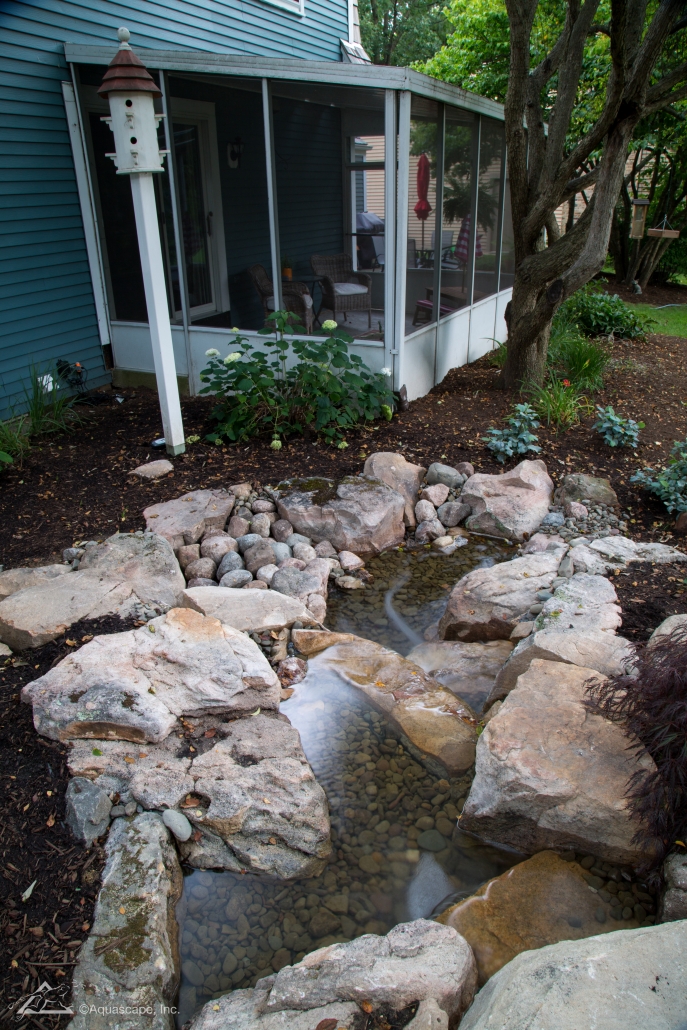
Selecting the Proper Pond Water Pump Tubing
It is also essential to use the correct tubing size because it directly affects the pond pump‘s maximum lift capability. If you use smaller tubing than specified, you will limit the pump’s maximum lift and the amount of water circulated.
Choosing the right pond water pump for your pond or fountain requires careful consideration and a little upfront research. However, doing so will go a long way toward keeping your water clean and healthy and your pump operating efficiently.
Types of Koi
Types of Koi
Koi fish can reach up t three feet in length which makes them one of the largest fish that people commonly keep in their garden ponds.
Usually they have two barbells on either side of their jaw and have a round snout that they use for taking in prey.
The female Koi are larger and have a rounder body shape than males. Their fins are short and rounded with lobed fins. Certain varieties can be bred to have long trailing fins.
Koi are available in a variety of colors. Most white or silver with colorful markings and spots.
These markings can be red, gold, black, deep blue or even orange. Their exact color and marks depend on the type of Koi.
Butterfly Koi
Butterfly Koi can also be known as Drago Koi. They have long pectoral and caudial fins. Keepers of Koi seek them out as they are highly prized and valuable.
These Koi can have the same color markings are other Koi and can only be set apart by the length of their fins.
Japanese Koi
These are the most common Koi and recognizable as the variety that you will see in most garden ponds and water gardens.
They are two varieties of Japanese Koi. The Kohaku are white with orange and red markings and are more standard. The second type is the Tancho and look the same as Kohaku with the exception of a single red dot on the top of their head.
Dragon Fish Koi
Not to be confused with the Butterfly Koi variety, the Dragon Koi Fish or Kumonryu is a black and white fish with markings that may change during different seasons.
Black and White Koi
There are two varieties of this breed. The Shor Utsui that have white with black spots and markings. You may see black on one side of the head and white on the other in some of this type.
The other is the Matsuba which is black and white too but it may have black markings over a gold or red body.
Gold Koi
This type of Koi is also called an Ogon and is a prized one color. It will be entirely silver, gold or orange. Koi that have gold marks over a white body are called Ki. Kinrin fish sparkle in the water like gold coins due to their beautiful scales.
Next time we will talk about Koi habitats and the condition of their Ponds. If you would like to know more, ask one of our experts.
How can we help?
Introduction to Koi
Introduction to Koi
Let’s talk about Koi. What are they? In simple terms, Koi are fish. Specifically, they are an ornamental variation of a carp that are in the family Cyprinidae. In fact, the word Koi is the word for carp in Japanese.
Koi become popular in the 19th century when farmers in Japan started to use them in their rice gardens. They are now more common place in the world and have become a lucrative industry if you have the inclination to breed and grow them. That is not necessary to enjoy the simplicity of these wonderful fish as they are quite relaxing and mesmerizing to keep as pets.
Commonly in the wild, carp only live for twenty years but captive carp or Koi can be kept in a confined setting like a garden pond for up to fifty years with proper care and maintenance. Like any animal, they are a long-term commitment and certainly will last longer than most other pets.
Where can you get Koi fish? Common carp varieties can be found in many garden ponds and they can be purchased from reputable pond and aquarium dealers. The cost for each one ranges in price from fifty to eighty dollars.
What are Koi like? These lovely fish are very peaceful and will interact with others in their school and prefer to leave other species of fish alone. Typically, a school of fish will have between five and fifteen individual fish. When in a school, they will swim in a coordinated fashion that is beautiful. These are active fish and prefer to free-swim and show off their vibrant colors.
When you first purchase Koi, they will explore every part of their new environment. Expect to see them swim along the top or middle and look for natural food along the bottom of the pond.
Koi forage for food by taking a large inhale of food and then will filter out any debris that got into their mouth. For this reason, they are not recommended for freshwater ecosystems as they can disturb the natural setting of an aquarium. Koi will burrow and dig into sediment and uproot plants to eat on the seeds.
Will I have enough room for Koi? Koi fish are schooling fish and as such, you will want to have a few of them so they don’t get lonely. They can grow up to three feet in length. This is an important fact when calculating how big to make your garden pond if you eventually want to have Koi in your pond. The general rule of thumb is to have ten gallons of water for every inch of fish. This means you will want to have around 250 gallons of water for a single Koi fish at minimum.
If you are considering setting up a Koi pond, our professionals can help you with planning and design. Next time we will discuss the multiple varieties of Koi and setup for their pond.

